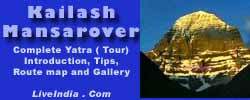|
Tenzing Hillary Everest
Marathon is an International High Altitude Adventure Sports Event being
held at Mt. Everest Base Camp every year on May 29. criss-crossing the
Highland Sherpa Trails of Khumbu Valley, to commemorate the historical
ascent of Mount Everest by Late Tenzing Norgay Sherpa and Sir Edmund Hillary
on May 29, 1953.
The Marathon Event is to
salute these 2 Great Heroes of our Human Civilization, regardless of their
Nationality & origin, ventured out into the unknown and carried Human
spirit to the TOP of the World or the Summit of Mother Earth, glorifying
the success of the entire mankind civilization.
Everest Marathon, the world's
highest marathon, the Toughest Marathon and the Ultimate Mountain Race,
is open for all High Altitude Running enthusiasts above 18 years of age
with sound mind and body.
This Everest Marathon, has
been marvelously participated by huge number of participants of Nepalese
and Western runners making it the world's only highest marathon and culturally
local and foreign Community Event. On hand at Namche Bazar 11,300 feet,
the Sherpa Capital of Everest were the Ambassadors from Germany and France
to Nepal as Chief Guests, glorifying this Marathon Race and morale boosting
the local and international participating RUNNERS.
Everest Marathon is considered
by High Altitude Mountain Runners as the world's ultimate race or the ultimate
challenge of this form of extreme sport . These runners endure the harsh
weather and even digest altitude sickness to experience the romantic participation
in this World's only Highest Marathon Event.
Tenzing Hillary Everest Marathon
is being widely covered by BBC, NHK of Japan and many other National and
International Electronic and Paper Media.
Everest Facts
1841: Sir George Everest,
Surveyor General of India from 1830 to 1843, records the location of Everest.
1848: Peak b is surveyed
the British, which ruled India; The height is calculated at 30,200 feet
from measurements taken 110 miles away.
1852: The Great Trigonmetrical
Survey of India determines the Peak XV is the highest mountain in the world.
1854: Peak b renamed Peak
XV.
1856: Surveyor Andrew Waugh
completes the first height measurement, declaring Everest to be 8840 meters
high. (29,002 feet).
1865: Peak XV re-named Mt.
Everest to honor Sir George Everest, the Surveyor General of India. Everest
is known as Chomolungma in Tibet and Sagarmatha in Nepal.
1903: The Viceroy of India,
Lord Curzon, concerned about possible Russian influence inside Tibet, sends
Sir Francis Younghusband to ostensibly negotiate "frontiers and trade".
The Tibetans refuse to enter negotiations, so Younghusband leads a British
Army Expedition to Lhasa. A treaty is eventually signed in September, 1904,
after the Dalai Lama flees to Mongolia.
1904: A member of Younghusband's
staff, J. Claude White, photographs the Eastern side of Everest from Kampa
Dzong, 94 miles away. While not the first photograph of Everest ever taken,
it's the first to show any significant details of the mountain.
1907: Natha Singh, a member
of the British Indian Survey, obtains permission to enter the Mount Everest
region from the Nepalese side. He maps the Dudh Kosi valley - gateway to
the southern route up the mountain - all the way to the end of the Khumbu
Glacier.
1913: Captain John Noel,
a British military officer, travels to Tibet in disguise (at the time foreigners
were forbidden in Tibet) to find the best way to approach Everest. He comes
to within 60 miles of Everest, only to find his way blocked by an unexpected
mountain range that did not appear on his faulty maps. Noel is able to
view the top 1000 feet (300 meters) of Everest when it appears out of the
shifting mists, a "glittering spire of rock fluted with snow".
1920: The Dalai Lama opens
Tibet to outsiders after the political situation involving China and Russia
relaxes somewhat. The Royal Geographic Society and the Alpine Club hold
a joint meeting to discuss how to proceed with an expedition to Mount Everest.
Explorers had reached both the North and South Poles, so the next "feat"
was Everest. The Mount Everest Committee is established by Younghusband,
and a formal resolution is passed stating that an expedition would take
place the following year with reconnaissance as the first priority, (although
a summit attempt was not discouraged). A full-scale summit attempt was
to be launched the following year in 1922.
1921: The First British Everest
Reconnaissance Expedition to the mountain, led by Lt. Colonel Charles Howard-Bury.
This is George Leigh Mallory's first trip to the mountain. After spending
ten weeks exploring the northern and eastern reaches of the mountain, on
September 24, 1921, Guy Bullock and George Mallory were the first climbers
to reach the North Col of Everest at an altitude of around 23,000 feet
(7000 meters). The northern route up the mountain had now been established.
1922: The Second British
Everest Expedition to the mountain, led by Brigadier General C.G. Bruce,
following the same route reconnoitered the previous year. George Mallory
returns along with climbers George Finch, Geoffrey Bruce, Henry Morshead,
Edward Norton, Howard Somervell, and John Noel as expedition filmmaker.
On May 22nd, Mallory, Norton, Somervell and Morshead make the first assault,
and climb to 26,800 feet (8170 m) on the North Ridge before retreating.
On May 23rd, George Finch and Geoffrey Bruce climb up the North Ridge and
Face to 27,300 (8320 meters) feet using oxygen. On June 7th, Mallory leads
a third attempt on the summit that claims the lives of seven Sherpa climbers
in an avalanche below the North Col, the first reported deaths on Everest.
1923: While on a lecture
tour in the United States, a reporter asks Mallory why he wants to climb
Everest, and Mallory immortally replies "Because it's there".
1924: The Third British Everest
Expedition to the mountain, led by Acting Leader Lt. Colonel Edward Norton
after Brigadier General C.G. Bruce is indisposed due to a flare-up of malaria.
As a result George Mallory is promoted to Climbing Leader. Geoffrey Bruce,
Howard Somervell, and John Noel return from the previous year, along with
newcomers
Noel E. Odell and Andrew Comyn Irvine.
1924: June 4th: After weeks
of appalling weather, a string of camps are established on the northern
side of the mountain, culminating in Camp 6 at 26,700 feet (8140 meters)
on the North Ridge. Norton and Somervell attempt an oxygenless ascent,
following an ascending diagonal line across the North Face of the mountain
towards the Great Couloir. After Somervell is forced to give up at about
28,000 feet (8500 meters), Norton continues alone, reaching a high point
of 28,126 feet (8570 meters) near the top of the Great Couloir, a height
record not exceeded by anyone for the next 29 years!
1924: June 8th: George Mallory
and Andrew Irvine attempt the summit using oxygen and Irvine's modified
oxygen apparatus. Noel Odell, climbing in support below, catches a glimpse
of the climbers at 12:50 pm ascending a "great rock step" on the NE Ridge
above. According to Odell they were behind schedule but climbing "with
alacrity"; the first of many climbers on Everest to go for the summit too
late. Odell originally thought he spotted the two climbers ascending the
Second Step, but later changed his mind to the First Step when told how
difficult the Second Step looked to a later generation of Everest climbers
(the 1933 British Expedition). During the 1933 expedition, Andrew Irvine's
ice ax is found on the upper slopes of the mountain at about 27,690 feet
(8440 meters) and approximately 250 yards (meters) east of the First Step.
Eric Simonson's 1999 Mallory & Irvine Research Expedition discovers
an oxygen bottle that belonged to the pair near the base of the First Step,
and Mallory's remains were found at 26,750 feet (8150 meters), on a line
vertically below the ice ax position. No evidence of a successful summit
bid has been found, nor have any signs of the two climbers been found above
the Second Step, the key to the route. Despite the lack of hard evidence,
the debate on whether they reached the summit of Everest continues to this
day.
1931: March 19: The Mount
Everest Committee is re-established with Sir William Goodenough as Chair.
Concerned of the growing reputation of American and German climbers - the
latter having gained much experience on Kangchenjunga - the Committee makes
inquiries into the possibility of another British expedition to Everest.
Eventually the Dalai Lama gives "reluctant permission" so that "friendly
relations may not be ruptured".
1933: April 3: First flight
over Mount Everest by two British Westland biplanes powered by turbocharged
Pegasus engines. The planes take off from Purneah, India. Buffeted by downdrafts
and Everest's plume, the flight fails to obtain a photo of the summit when
the photographer blacks out due to a ruptured oxygen line. The flight is
successfully repeated on April 19th, although the actual summit wasn't
flown over this time.
1933: The Fourth British
Expedition. A new generation of climbers attempts Everest under the Leadership
of Hugh Ruttledge. These new climbers include Jack Longland, Frank Smythe,
Eric Shipton, P. Wyn Harris, and L.R. Wager. Along with a powerful and
spirited team of Sherpa "Tigers", Camp 6 is established on a ledge half-way
up the Yellow Band at a height of 27,300 feet (8320 meters) - the Sherpas
wanted to continue higher to a campsite at the base of the First Step,
but it is wisely decided that they would not get back to the North Col
before dark. Longland leads the Sherpas back down, but they are caught
in a fierce and unexpected storm. Longland manages to keep his bearings
and keeps the party en route down the spine of the North Arete. During
the descent they discover the remains of the 1924 Camp 6, and even find
a working battery-operated torch in the debris.
May 30th: The first oxygenless
summit attempt by Wyn Harris and Wager. Their plan is to reconnoiter Mallory's
ridge route, and if not feasible, attempt Norton's Great Couloir route
instead. Early in the ascent they find Andrew Irvine's ice ax at 27,690
feet (8440 meters), some 250 yards (meters) east of the First Step. The
pair continues traversing below the NE Ridge, but are unable to gain the
Ridge via a shallow gully below the Second Step, having missed their only
chance to gain the Ridge by ascending a 4th class gully on the north side
of the First Step. They continue traversing into and across the Great Couloir,
and manage to reach Norton's high point before admitting defeat.
June 1st: A second oxygenless
attempt is made by Eric Shipton and Frank Smythe. In a truly superhuman
effort, they make an attempt after spending two nights in the Death
Zone without oxygen waiting for good weather. They follow essentially the
same ascending line taken by Wyn Harris and Wager to the base of the First
Step, but continue along Norton's traversing Great Couloir route. Shipton
is forced to give up a little past the First Step, and Smythe continues
alone, crossing the Great Couloir somewhat lower down than his predecessors
where the ledges were more favorable. Smythe too gives up at Norton's high
point, so the 1933 Expedition ends up unsuccessful.
1934: The eccentric Maurice
Wilson attempts to solo Everest, having no mountaineering experience but
possessing an inner faith to succeed. Camped at the base of the North Col,
Wilson asks his Sherpas to wait ten days for him to return, after which
they would be free to leave. He doesn't return, so the Sherpas return to
Darjeeling, where Tenzing Norgay reports seeing them with large amounts
of money. Wilson's body is later found at approximately 21,000 feet (6400
meters) below the North Col by members of the 1935 Reconnaissance Expedition.
He was found in the remains of his tent; apparently he had died while in
the act of taking off his boots. How far did he get? No one knows... His
body was buried in a crevasse and it periodically resurfaces over the years
as the East Rongbuk Glacier continues its steady advance downhill.
1935: Fifth British Expedition
(Reconnaissance). A small post-monsoon expedition led by Eric Shipton,
that was Tenzing Norgay's first trip to the mountain as a young porter.
Expedition members include Bill Tilman, Dr. C.B.M. Warren, E.G.H. Kempson,
L.V. Bryant, and E.H.L. Wigram. The expedition concentrates on exploring,
surveying, and climbing in the Everest region (where off in the distance
they can see that Everest is in perfect condition to climb). The party
doesn't reach Rongbuk until early July, where coated in monsoon snow, the
mountain is out of condition to climb. Nevertheless, since investigating
the possibility of a post-monsoon attempt is one of the charges of the
reconnaissance, they establish Camp III at the base of the North Col, where
they find the remains of Maurice Wilson. On July 12 they reach the North
Col with enough supplies for two weeks. Continuous monsoon snows prevent
any further advance up the mountain, so the expedition splits into several
groups that engage in an orgy of climbing and exploring in the region before
returning to Darjeeling.
1936: Sixth British Expedition
with Hugh Ruttledge returning as Leader. Also returning to Everest are
Frank Smythe, Eric Shipton, P. Wyn Harris, E.G.H. Kempson, Dr. C.B.M. Warren,
and E.H.L. Wigram along with two newcomers, P.R. Oliver and J.M.L. Gavin.
Tenzing Norgay returns for his second expedition as a porter. For the first
time, lightweight radio sets are taken to Everest. A large, strong, and
experienced expedition with many hopes of reaching the top, it failed because
of the early onset of the monsoon on May 25th. Interestingly enough, the
only two expeditions to Everest that had a late monsoon were the '21 and
'35 Reconnaissance!
1938: Seventh British Expedition.
Led by Bill Tilman who advocated smaller, less expensive expeditions (although
he is convinced to bring four oxygen sets along). Accompanying Tilman are
Eric Shipton, Frank Smythe, C.B.M. Warren, P. Floyd, P.R. Oliver, and Noel
Odell from the tragic 1924 expedition. Odell is now 47 years old, but extremely
fit after climbing Nanda Devi in 1936 with Tilman. Returning yet again
as a porter is the persistent Tenzing Norgay. Remembering the early onset
of the monsoon suffered by the 1936 expedition, they arrive at Rongbuk
early on April 6th and surprisingly find the mountain already clear of
winter snow. Three weeks later Camp III is established below the North
Col, but the weather is too cold and the party too ill to continue. They
retreat to the Kharta Valley to recuperate at the lower altitude. When
they returned to Everest a week later, the monsoon had unbelievably broken
on May 5th and the mountain was covered in snow. Nevertheless a camp is
placed on the North Col, and then Camp 6 is established on a scree slope
below the Yellow Band at 27,200 feet (8290 meters). In back-to-back assaults,
Smythe and Shipton are turned back by the deep snow, as are Tilman and
Lloyd the next day. The expedition fails, but it had proved that a small
expedition could place climbers in position for a serious summit bid.
1947: A successor to the
old Everest Committee is formed - the Himalayan Committee of the Alpine
Club and Royal Geographical Society.
1947: Canadian-born Brit
Earl Denman attempts to illegally climb Everest from the North along with
Sherpas Ang Dawa and Tenzing Norgay, the latter back after nine years for
his fourth attempt on the mountain. After nearly being arrested by a Tibetan
patrol en route, the trio reach the Rongbuk Monastery. Using Denman's woefully
inadequate equipment, and suffering terribly from the cold, they reach
the foot of the North Col but in a terribly weakened condition. After a
feeble attempt on the lower slopes of the Col, they admit defeat and turn
back. Denman is forced to walk part of the way back to Darjeeling in bare
feet after his boots wear out. Amazingly the whole 600-plus mile (1000
km) roundtrip from Darjeeling to Everest and back took only five weeks
by foot.
1950: In October the Communist
Chinese invade Tibet, and Tibet falls under Chinese rule. Everest expeditions
from the North are prohibited.
1950: After a palace revolution
in which the ruling Rana family are overthrown, Nepal opens up to the West,
partially as a result of the Chinese takeover in Tibet. Foreign expeditions
are allowed access to the southern side of Everest for the first time.
1950: Anglo-American Nepal
Reconnaissance. Organized and led by the American Dr. Charles Houston and
including Bill Tilman. The group enters the Solu Khumbu region - homeland
of the Sherpas - and explores to the base of the Khumbu Icefall. Tilman
concludes that the route up into the Western Cwm is not a viable one!
1951: Without official permission
from Nepal, and only a few months after the 1950 Anglo-American Nepal Reconnaissance,
the Dane Klavs Becker-Larsen attempts to climb the Northern pre-war Everest
route but via a southern approach. With a party of Sherpa porters and guides,
he attempts to enter Tibet via the Lho La, and actually climbs about halfway
up before being turned back by rockfall and his lack of experience (it
was the first time he had ever used an ice ax!). Undeterred, Larsen crosses
the Nampa La instead and reaches the Rongbuk Monastery. Several days later
Larsen and two Sherpas attempt to climb the North Col but turn back after
yet more rockfall. Larsen wisely gives up the attempt and returns to Nepal.
1951: British Reconnaissance
supported by the Alpine Club and the Royal Geographic Society. A post-monsoon
exploration led by Eric Shipton with M.P. Ward, T. Bourdillon, W.H. Murray,
and New Zealanders Edmund Hillary and H. Riddiford, the expedition was
forced to contend with swollen streams, washed-out bridges, leeches, and
reluctant porters. On the 22nd of September they reached Namche Bazaar,
and three days later left with the objective of scaling the Khumbu Icefall
and entering the Western Cwm. From a vantagepoint on the lower slopes of
Pumori, they could see that the route up to the South Col looked feasible.
Eventually the expedition pushed the route almost completely through to
the top of the Icefall before retreating.
1952: Swiss Expeditions sponsored
by the Swiss Foundation for Alpine Research
Spring Attempt: led by Dr.
E. Wyss-Dunant with climbers G. Chevalley, R. Lambert, R. Dittert, L. Flory,
R. Aubert, A. Roch, J. Asper, E. Hofstetter, and Tenzing Norgay as Sirdar.
The party ascends the Geneva Spur and places Camp VI on the South Col.
Camp VII is placed at approximately 27,500 feet (8382 meters) on the SE
Ridge. After a miserable night without sleeping bags or a stove, Tenzing
Norgay and Raymond Lambert make an attempt using oxygen but fail below
the South Summit at an altitude of 28,210 feet (8595 meters), beating Norton's
height record by only 84 feet (25 meters)!
Post-Monsoon Attempt: led
by G. Chevalley with climbers R. Lambert, E. Reiss, J. Buzio, A. Spohel,
G. Gross, N.G. Dyhrenfurth. The indomitable Tenzing returns again as expedition
Sirdar. Instead of climbing the Geneva Spur, the route is pushed up the
Lhotse Face instead, now the standard route. Unfortunately the expedition
is fraught with bad luck and the Sherpa Mingma Dorje is killed on the Lhotse
Face by falling ice, the first Everest fatality in twenty years since Maurice
Wilson. Climbing along with the same party, incredibly a second rope slips
on the ice and falls 600 feet (180 meters) to the bottom of the slope.
Miraculously no one else is injured. A camp is established on the South
Col, but the arrival of winter's bitter cold and fierce gales puts an end
to the attempt. The expedition lays the groundwork for 1953.
1952: Rumors of a post-monsoon
Russian attempt from the North led by Dr. Pawel Datschnolian, possibly
with the hope of beating the Swiss to the top and scoring major propaganda
points in an age of Sputnik. There are reports that this expedition left
Moscow on October 16th and eventually placed Camp VII at 26,800 feet (8170
meters) before six climbers (including Datschnolian) simply disappeared.
The Russians deny the expedition ever took place and the Chinese have never
made any mention of it. Interestingly enough, in an interview with the
Tibetan Gonbu (also known as Gonpa), a member of the successful 1960 Chinese
first ascent of the North Ridge, a "mystery camp" was encountered at 27,900
feet (8500 meters). Located above the Yellow Band, this camp could not
have been placed there by any of the British pre-war expeditions. Was the
camp placed there by this "mystery" Soviet expedition?
1953: British Expedition
and FIRST SUMMIT. Led by Colonel John Hunt and consisting of climbers Dr.
R.C. Evans, G. Band, T. Bourdillon, A. Gregory, Edmund Hillary, W.G. Lowe,
C. Noyce, M.P. Ward, M. Westmacott, and C.G. Wylie. Returning as Sirdar
from the Swiss attempts is yet again Tenzing Norgay. The route through
the Icefall is completed by April 22, Camp VI is established at the foot
of the Lhotse face at 23,000 feet (7000 meters), and after a lengthy delay,
the South Col is reached via the Lhotse Face route pioneered by the Swiss
the year before.
May 26: First Assault by
Evans and Bourdillon from the South Col using closed-circuit oxygen sets.
The same day Hunt leads a party of Sherpas from the South Col with the
intent to establish Camp IX on the SE Ridge for the second assault party
consisting of Hillary and Tenzing. Evans and Bourdillon reach the South
Summit at 1 PM at an elevation of 28,750 feet (8770 meters), but are forced
to descend due to the lateness of the hour, strong winds, and lack of oxygen.
May 29: Second Assault by
Hillary and Tenzing using open-circuit oxygen sets. They leave Camp IX
at approximately 27,900 feet (8500 meters) by 6:30 AM, and reach the S.
Summit by 9 AM. After negotiating the 40 foot (12 meter) Hillary Step,
they are the first to reach the summit of Everest, reaching the top at
11:30 AM. After descending to the South Col, they are met by George Lowe
where Hillary states: "Well, George, we knocked the bastard off!"
1955: The height of Everest
is adjusted by 26 feet to 29,028 feet (8848 meters).
1956: Swiss Everest/Lhotse
Expedition led by A. Eggler with W. Diehl, H. Grimm, Dr E. Leuchtold, F.
Luchsinger, J. Marmet, F. Muller, E. Reiss, A. Reist, E. Schmied, H. Von
Gunten and Sirdar Pasang Dawa Lama. The South Col was reached by the middle
of May, and a successful summit bid was done on Lhotse via the very difficult
North ridge on May 18 by Reiss and Von Gunten. On May 23 from a high camp
at 27,500 feet (8400 meters) on the SE Ridge, Schmied and Marmet reach
the summit. The following day Reist and Von Gunten also reach the summit.
1958: Joint Chinese/Russian
reconnaissance from the North that reaches 21,000 feet (6,400 meters) below
the North Col. The plan was for the two countries to return later for a
joint assault, but this expedition never materialized after relations between
the two states deteriorate.
1960: Chinese and Tibetan
team of 214 men and women, led by Shih Chan- chun, makes the first summit
of Everest via the North Col and Northeast Ridge. Long doubted by Western
mountaineers because of the lack of a summit photo and the claim of summiting
at night, the photos and film the Chinese did release reveal that they
at least climbed the Second Step, the key to the route (although Reinhold
Messner claims he possesses documentation proving they didn't climb it,
so far this evidence has not been produced). The final assault party of
Wang Fu-chou, Liu Lien-man, Chu Yin-hua, and the Tibetan Gonbu (also known
as Gonpa) assaulted the final 15 foot (5 meter) Second Step headwall using
pitons and team tactics. After Liu Lien- man repeatedly falls off attempting
to lead the pitch, Chu Yin-hua takes off his boots and socks, and using
a shoulder stand climbs the
last vertical pitch in bare
feet! Exhausted by his effort, Liu Lien- man is forced to halt at 28,600
feet (8,700 meters), but the remaining three climbers make it to the summit
where they purportedly leave a plaster bust of Chairman Mao by a rock outcrop.
1960: First Indian Expedition
led by Brigadier G. Singh. Climbers Capt. N. Kumar, Sonam Gyatso, and Sherpa
Nawang Gombu reach 28,300 feet (8625 meters) just below the South Summit
before retreating in a violent storm and driving snow.
1962: Illegal four-man expedition
led by the American Woodrow Wilson Sayre following the pre-war British
route up the North Col and NE Ridge. Possessing a permit to climb Gyanchung
Kang from the Nepalese side, the party ascends the Ngozumpa Icefall with
Sherpa support, but then surreptitiously crosses the Nup La into Tibet.
Without porters and relying on a grueling schedule of load-shuttling that
covers the same ground three times daily, the group reaches the base of
the North Col in nineteen days. They climb the North Col, but a fall lands
Sayre and partner Roger Hart in a crevasse where they survive the night
by wrapping themselves up in a tent. Undeterred, Sayre and Norman Hansen
set off the very next day up the North Ridge, but can only climb 1,200
feet (400 meters) in the next two days. Realizing that they are beaten,
they turn back but Sayre slips and falls 600 feet (200 meters) down the
North Ridge snowfield before stopping. Incredibly, the now emaciated and
half-starved expedition is able to return back over the Nup La into Nepal
without encountering Chinese patrols.
1962: Second Indian Expedition
with Major John Dias as leader. Returning to the SE Ridge route, climbers
Sonam Gyatso, Hari Dang, and Mohan Kohli are forced to retreat from a high
point of 28,600 feet (8720 meters) because of bad weather.
1963: American Expedition
with Norman Dyhrenfurth as leader and including A. Auten, Barry Bishop,
Jake Breitenbach, J. Corbet, D. Dingman, D. Doody, R. Emerson, Tom Hornbein,
Lute Jerstad, J. Lester, Willi Unsoeld, and Jim Whittaker. A huge expedition,
costing almost $400,000 and supported by the National Geographic Society,
over 900 porters carry 29 tons of food and equipment to the base of the
mountain. Base Camp is established at the foot of the Khumbu Icefall on
Mar 21 and the route through the icefall prepared soon after. Jake Breitenbach
is killed by collapsing seracs in the Icefall but the expedition continues.
The expedition splits into two parties - the West Ridgers and the South
Collers.
First Assault: May 1 From
Camp 6 at 27,450 feet (8370 meters) on the SE Ridge, Jim Whittaker and
Sherpa Nawang Gombu reach the summit in strong winds at 1 PM. Whittaker
becomes the first American to summit Everest.
Second Assault: After a tent
at Camp 4W - including occupants - is nearly blown off the West Shoulder
by hurricane force winds, Camp 5W is placed in the Hornbien Couloir at
the foot of the Yellow Band at 27,250 feet (8300 meters). Tom Hornbein
and Willi Unsoeld squeeze their way through the couloir and ascend a 60
foot (20 meter) headwall before emerging onto the upper summit pyramid
at 27,900 feet (8500 meters). The pair then traverse across to the West
Ridge proper, reaching the summit at 6:15 PM. They are forced to descend
the SE Ridge where they meet Jerstad and Bishop who had summited at 3:30
PM. The four men descend to around 28,000 feet (8500 meters) before having
to bivouac for the night on the ridge proper. They survive a long, cold
night out in the open and descend safely to the South Col the next day.
Unsoeld later loses most of his toes to frostbite. The first new route
and the first traverse of Everest.
1965: Third Indian Expedition,
with Commander M.S Kohli as leader. On May 20, 1965 they succeed when A.S.
Cheema and Sherpa Nawang Gombu ascend the SE Ridge. Gombu becomes the first
person to summit Everest twice (the 11th and 17th summit). Out of the first
seventeen summits of Everest, Nawang had two of them! Additional summits
were achieved by Sonam Gyatso, Sonam Wangyal, C.P. Vohra, Ang Kami, H.P.S.
Ahluwalia, H.C.S. Rawat, and Phu Dorje.
1966-1969: Nepal is closed
to mountaineering during this politically tense period involving antagonists
India and China.
1969: Japanese SW Face Reconnaissance
Expeditions. In the Spring, a party including Naomi Uemura enters the Western
Cwm and probes the lower slopes. The Japanese return in the autumn with
Uemura and Masatsugu Konishi, and the route is pushed up the Central Gully
to the base of the Rock Band before the expedition returns home, convinced
that a full-scale expedition could succeed.
1970: Japanese SW Face Expedition
led by the seventy-year old veteran Saburo Matsukata. A massive expedition
with 39 climbers, seventy-seven Sherpas and a woman, Setsuko Watanabe.
Unable to improve on the previous year's reconnaissance efforts due to
poor snow conditions and rockfall, the expedition switches to the standard
South Col route. Teruo Matsuura and Naomi Uemura reach the summit on May
11, followed by K. Hirabayashi and Chottare Sherpa on the next day. Watanabe
sets an altitude record for women by climbing to the South Col.
1970: Japanese Ski Expedition.
Climbing along with the SW Face expedition, Yuichiro Miura skis from the
South Col to the bottom of the Lhotse Face on May 6. Reaching speeds of
100 mph (160 kph), Miura slows himself with a parachute but loses control
after hitting some rocks. He slides unconscious about 600 feet (200 meters)
down the icy slopes, and fortunately stops just short of a huge crevasse.
1971: International Expedition.
Norman Dyhrenfurth leads an expedition with thirty climbers from thirteen
different countries including Don Whillans, Dougal Haston, Naomi Uemura,
Pierre Mazeaud, and H. Bahuguna. This optimistic expedition hopes to simultaneously
climb the SW Face and the West Ridge Direct, but is fraught with one- upsmanship,
personality conflicts, and organizational problems. Bahuguna is caught
out in a storm at Camp 3W. A rescue party climbs up to help him and he
is found clipped onto the fixed ropes, missing a glove, his bare midriff
exposed to the storm, and his face coated in ice. When it proves impossible
to move him horizontally, they try to lower him vertically into the shelter
of a crevasse, but the rope runs out before they can reach it a la Tony
Kurtz on the Eiger Nordwald. Whillans utters his famous remark, "Sorry
Harsh old son, you've had it." The expedition falters after his death,
but Whillans and Haston push the SW Face route to 27,400 feet (8,350 meters)
before lack of equipment forces an end to the expedition.
1971: Argentine Post-Monsoon
Expedition. A post-monsoon expedition where J. Peterek and U. Vitale reach
26,600 feet (8,100 meters) before being defeated by high winds and an unfavorable
weather forecast.
1972: European Expedition
to the SW Face led by Dr. Karl Herrligkoffer and including climbers Don
Whillans, Doug Scott, Hamish MacInnes, Felix Kuen, Adolf Huber, Werner
Haim, and Leo Breitenberger. The expedition is plagued by personality conflicts
and the withdrawal of many of the climbers, but the route is pushed as
high as 27,200 feet (8,300 meters) before the attempt is abandoned.
1972: British SW Face Expedition
led by Chris Bonington including climbers Mick Burke, Nick Estcourt, Dougal
Haston, K. Kent, Hamish MacInnes, Tony Tighe, and Doug Scott. A post-monsoon
expedition confronted with terrible weather, an elevation of 27,200 feet
(8,300 meters) is reached below the Rock Band before retreating. Tragically,
Tony Tighe is killed in the Icefall during the descent.
1973: Italian Expedition.
Another huge expedition with sixty-four members led by Guido Monzino. Helicopters
are used to shuttle equipment past the Khumbu Icefall and one hundred Sherpas
are also employed. Eight climbers succeed via the South Col Route, including
16 year old Sambhu Tamang of Nepal. It is later revealed that Sambhu was
actually 18. Italian Summiters were Rinaldo Carrel, Mirko Minuzzo, Fabrizio
Innamorati, Virginio Epis, and Claudio Benedetti.
1973: Japanese Expedition.
Led by Michio Yuasa, this large forty- eight man expedition attempted both
the SW Face and South Col route. The SW Face party reaches 27,200 feet
(8,300 meters) before giving up. Success is achieved on the South Col route
when Hisahi Ishiguro and Yasuo Kato reach the summit, the first post-monsoon
success on the mountain.
1974: Spanish Expedition
attempts the South Col route. A high camp is placed on the SE Ridge, and
twice teams were in position for a summit attempt, but both times are defeated
by high winds. The second summit team manages to reach 27,900 feet (8,500
meters) before retreating.
1974: French West Ridge Expedition.
Led by Gerald Devouassoux, a post- monsoon attempt to climb the West Ridge
Direct starting from the Lho La. Because of political considerations, they
don't climb the slopes leading up to the Lho La directly, but start from
the base of the Khumbu Icefall; the expedition eventually reaches the West
Shoulder by September 9. A major lapse in monitoring weather reports prevents
them from learning that an unexpected return of warm monsoon weather is
about to occur. The tragic result is that Gerald Devouassoux and five Sherpas
are swept away in an immense avalanche, after which the expedition is called
off.
1975: Japanese Ladies Expedition
led by Mrs Eiko Hisana. On May 16 Junko Tabei of Japan became the first
woman to reach the summit via the South-East Ridge.
1975: Chinese Expedition
led by Shih Chan-chun, leader of the 1960 Chinese ascent, and organized
by a "Party Committee" that included Wang Fu-chou, one of the 1960 summiters.
A military-style expedition that uses soldiers to carry supplies to the
North Col and siege tactics to progressively reposition camps higher and
higher up the mountain. A final assault camp is established between the
First and Second Steps at 28,500 feet (8,680 meters) by the Mushroom Rock,
and the Second Step is prepared with an aluminum ladder to overcome the
final vertical headwall pitch. A team of nine climbers - eight
Tibetan and one Chinese
- reaches the summit on May 27, including the Tibetan woman, Phantog. Phantog
becomes the second woman to summit Everest, losing this honor to Junko
Tabei by only a few days. She is the first woman to summit from the Tibetan
side.
1975: British SW Face Expedition
(post-monsoon). Leader Chris Bonington and including H. MacInnes, Peter
Boardman, Martin Boysen, P. Braithwaite, Micke Burke, M. Cheney, C. Clarke,
Nick Estcourt, Dougal Haston, and Doug Scott. Base Camp is reached on August
22 and Advance Base is established on September 2. The expedition is blessed
with good weather and smooth logistics, resulting in the steady placement
of camps up the Central Gully to Camp 5 at 25,500 feet (7800 meters). The
Rock Band is ascended via a gully on the left side by Estcourt and Braithwaite,
who have some sporty moments when their oxygen runs out on dicey pitches
at 27,000 feet (8200 meters). The upper icefield is reached via an awkward
outward-sloping ramp; Haston and Scott establish Camp 6 a few days later
at an elevation of 27,300 feet (8300 meters). The next day they fix 1,500
feet of rope on the upper snowfield, extending the route towards a gully
leading up to the South Summit.
........Back |
















